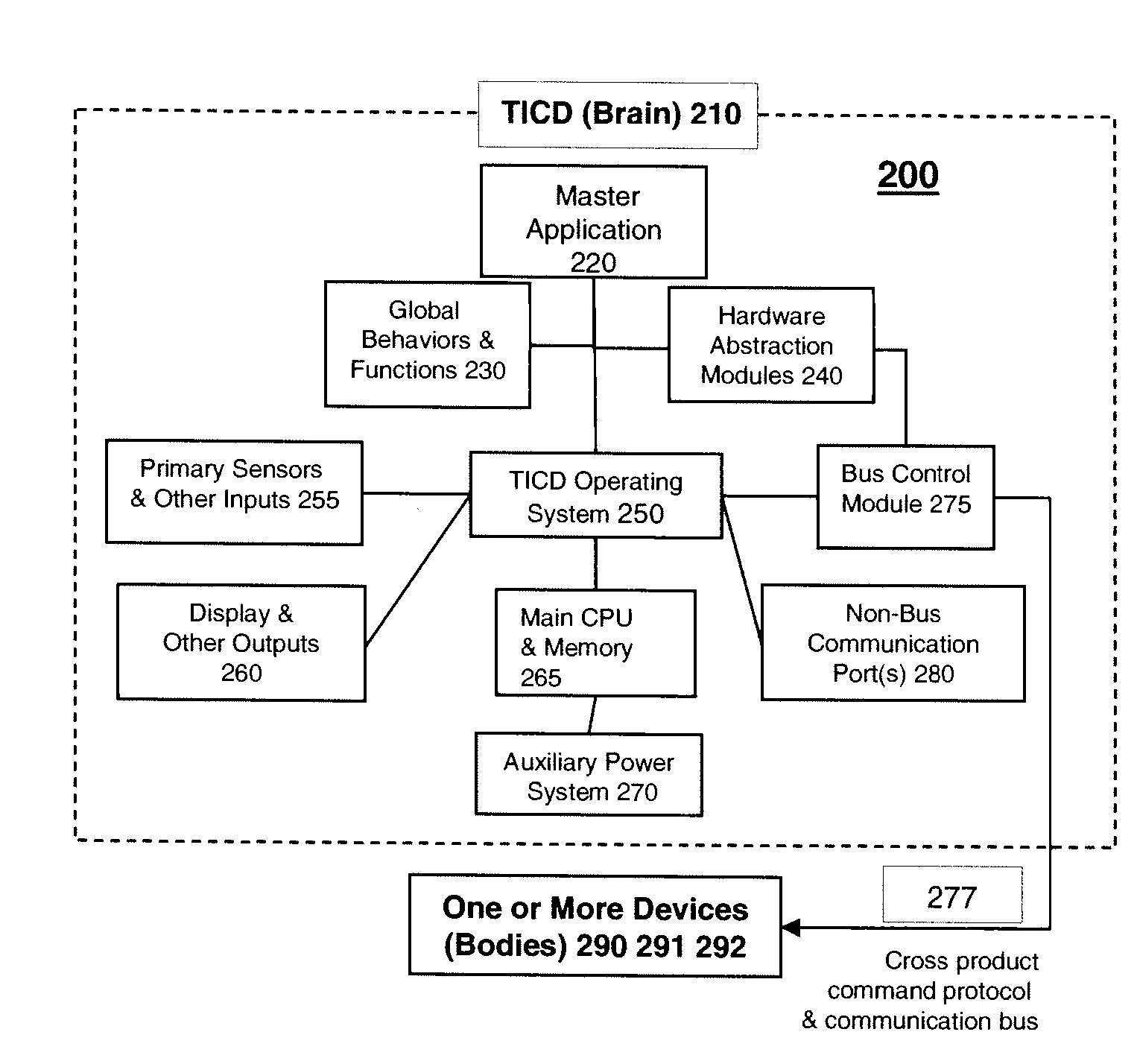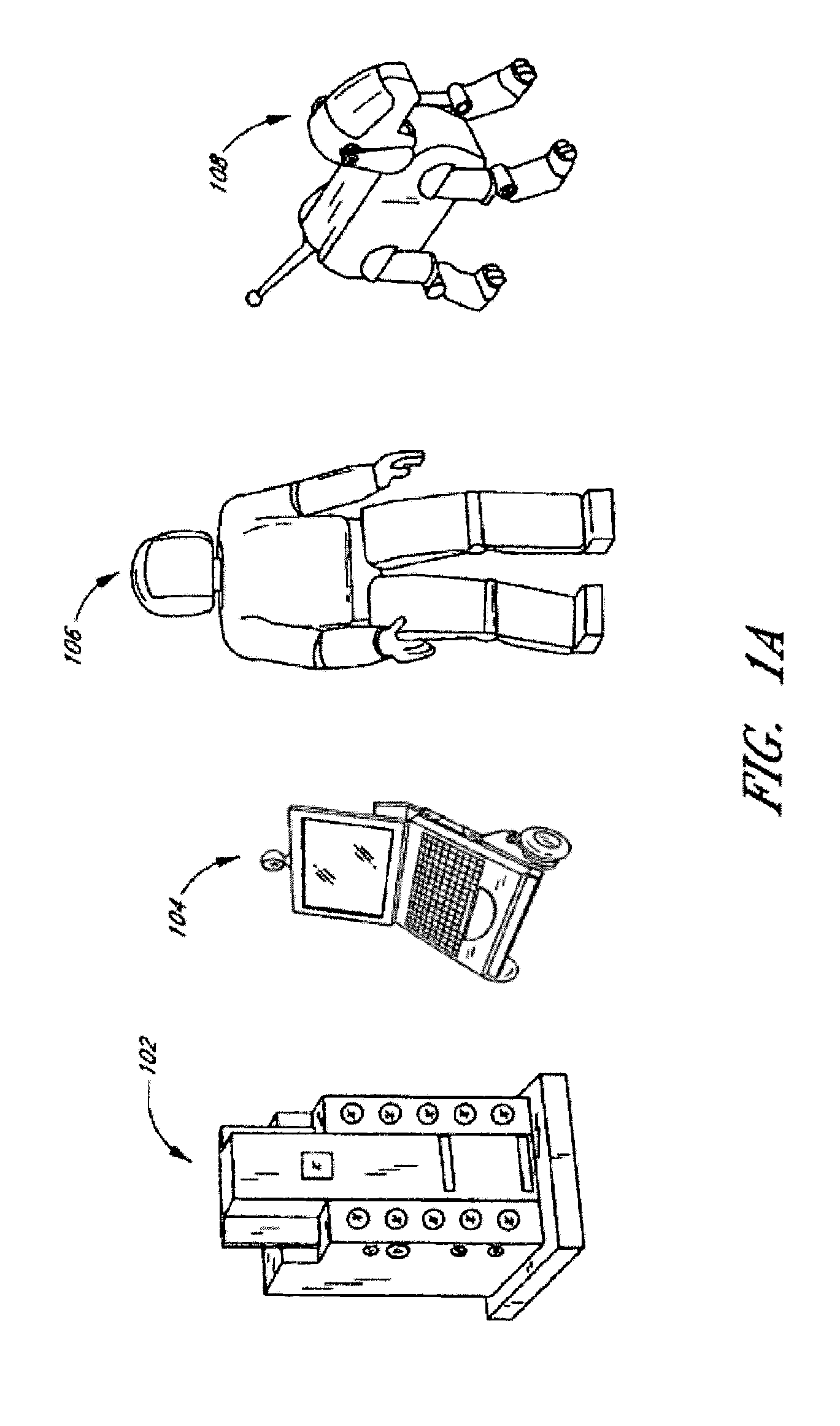Transferable intelligent control device
a technology of intelligent control and transferable parts, applied in the direction of electric programme control, program control, instruments, etc., can solve the problems of cost, complexity, and complexity of robotic devices, and achieve the effect of cost reduction, cost reduction, and cost reduction
- Summary
- Abstract
- Description
- Claims
- Application Information
AI Technical Summary
Benefits of technology
Problems solved by technology
Method used
Image
Examples
Embodiment Construction
[0014]A transferable intelligent control device is proposed that would enable manufactures and developers to produce much lower cost robotic devices (bodies) that provide device specific functionality without the cost burden of the control electronics, sensors and software described above, where the robotic devices would be compatible with one or more types of a transferable intelligent control device (a brain) which consumers and / or commercial customers can purchase and re-use across multiple types of lower cost robotic devices (bodies.)
[0015]A Transferable Intelligent Control Device (TICD) is a modular intelligent device. The TICD utilizes a platform architecture and communication protocol. The TICD interfaces, controls and executes integrated behaviors with different devices (e.g., robots, appliances, toys, computers, game systems, machines, sensors, mechanisms, other electronic products, and / or digital products) independent of the different devices' overall preexisting electrica...
PUM
 Login to View More
Login to View More Abstract
Description
Claims
Application Information
 Login to View More
Login to View More - R&D
- Intellectual Property
- Life Sciences
- Materials
- Tech Scout
- Unparalleled Data Quality
- Higher Quality Content
- 60% Fewer Hallucinations
Browse by: Latest US Patents, China's latest patents, Technical Efficacy Thesaurus, Application Domain, Technology Topic, Popular Technical Reports.
© 2025 PatSnap. All rights reserved.Legal|Privacy policy|Modern Slavery Act Transparency Statement|Sitemap|About US| Contact US: help@patsnap.com



